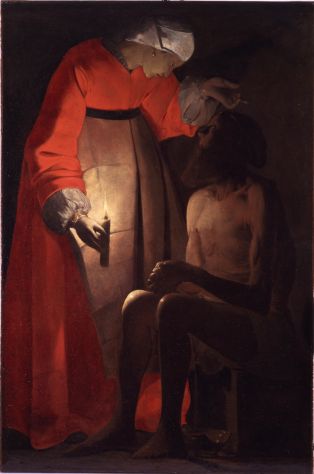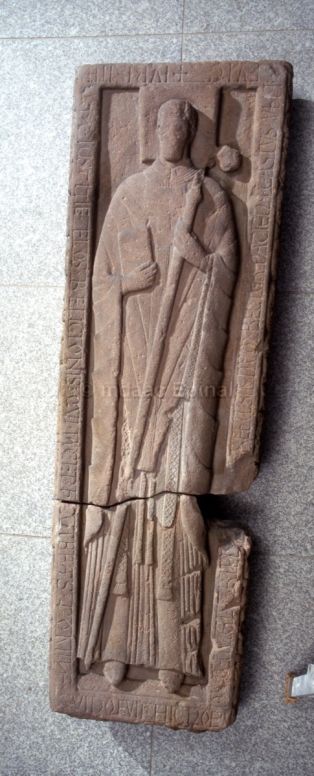- Découvrez les collections
- Notice d'oeuvre



H. 193 cm ; l. 63 cm ; P. 18 cm ; VOLUM. 0,2189
M0536_L.IV.E.28
L’abbé Gui dirigeait l’abbaye de Chaumousey, près d’Epinal. Personnage éminent, il est cité dans de nombreux documents de la fin du XIIe siècle soulignant son rôle d’arbitre dans diverses querelles. Il porte les ornements sacerdotaux : la chasuble au-dessus de son aube et le manipule sur son bras gauche. Le livre et surtout la crosse symbolisent son rang dans le clergé régulier. À première vue, tout paraît de style roman dans cette sculpture en faible relief qui déforme le corps pour l’adapter au cadre. Mais le coussin est une innovation de la sculpture gothique des alentours de 1200, ce qui permettrait de dater cette pierre tombale du début du XIIIe siècle.
This slightly trapezoidal tombstone is a rare example of this type of sculpture in the twelfth century. Much of this high relief sculpture has eroded, most likely because of its placement on the ground of the church. The border includes an inscription in Latin: “He who rests here was an abbot named Gui. He shone with the three-fold virtue of Noah, Job, and Daniel; he was kind and irreproachable, exemplifying fairness, justice, and religion.” The abbot is depicted in his ecclesiastical clothing: a chasuble (a wide sleeveless coat that slips over the head), a stole (a long cloth band worn around the neck), and a maniple (a cloth band worn over the left arm). He is holding the Book of the Gospels and a cross. The tombstone was located in the church chancel of Chaumousey. The buildings of that abbey, which dates back to 1093, were sold during the French Revolution and have all but disappeared; only a few vestiges remain near the Bouzey reservoir.



 Copyright© WebMuseo 2017 - 2024
Copyright© WebMuseo 2017 - 2024